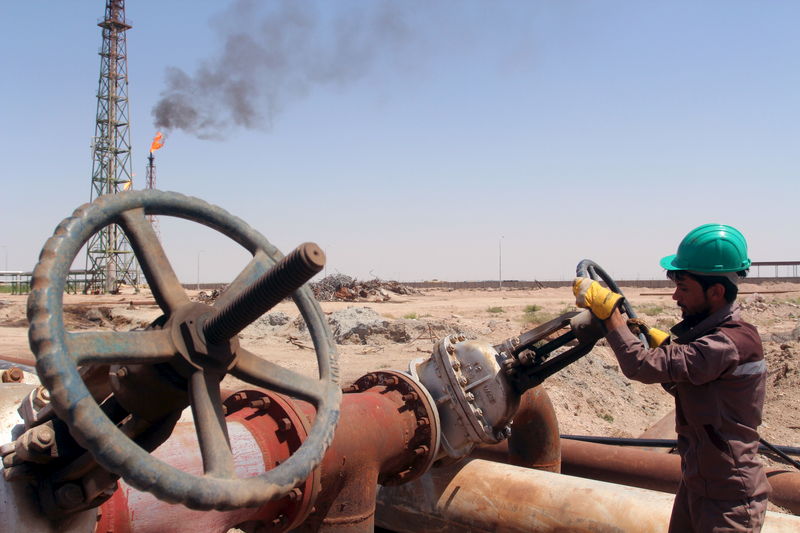(Bloomberg) -- Europe’s planned ban on Russian oil imports and the easing of Covid-19 restrictions in China threaten to add a fresh jolt to surging consumer prices.
European Union leaders agreed on Monday to pursue a partial ban on Russian oil imports to punish the Kremlin for the invasion of Ukraine. The move will continue a process of Europe buying less and less from Moscow and further redraw global flows of the commodity, just as inflation in the euro area hit an all-time high.
“Global trade flows are certain to be upended,” RBC Capital Markets analysts Michael Tran and Helima Croft said in a note. “It will prove economically inflationary for all nations involved.”
The step comes as China shows signs of winning its battle to control Covid, which could revive the most important source of demand growth. The country brought new cases below 100 for the first time since early March, and authorities are loosening restrictions in Shanghai and tentatively easing curbs in Beijing.
Brent futures climbed as much as 2% to reach $124.10 a barrel at one stage on Tuesday and are up about 58% already this year. That surge factors in war disruptions but despite China imposing demand-sapping pandemic measures.
A further rally would be met with dismay in oil-consuming nations, especially since the rise in retail fuel prices has far exceeded increases for crude.
Inflation Accelerator
Economists at Rabobank predict Europe’s ban on Russian seaborne oil imports will plunge the 19-nation euro area into a recession at the end of this year. They now see full-year growth of 2.2% for 2022 and a 0.1% contraction in 2023.
Bloomberg Economics estimates that a $10-a-barrel gain in headline oil prices in the third quarter would add about 0.2 percentage points to inflation in Europe and 0.4 percentage points in the US. The effect on economic growth would nevertheless be relatively negligible, especially for the US which is itself a large energy producer.
President Joe Biden’s administration has been battling to bring down fuel prices by releasing emergency stockpiles, but that hasn’t stopped retail gasoline from hitting records and closing in on $5 a gallon.
His administration has even asked oil refineries about the feasibility of bringing back mothballed capacity. In the UK, it now costs about 100 pounds, or $126, to fill up a standard family car with diesel.
Germany is trying to take the sting out of the fuel surge by offering a massive discount on public transport to get people out of their cars this summer, but that’s not enough for the International Energy Agency, which has suggested temporary speed limits on the autobahn.
“We are in wartime, in an energy crisis, and we had better prepare for even more difficult times,” IEA Executive Director Fatih Birol told Germany’s Der Spiegel magazine in an interview published Tuesday. “Driving a few kilometers an hour slower is just a tiny compromise compared to the suffering of the people in Ukraine.”
China’s potential comeback is vitally important. Its recent Covid restrictions kept a lid on prices, which means the nation’s ability to find a balance between sustaining economic growth and fighting the virus may well prove pivotal for the crude market this year.
Insurance Blow
Europe’s ban still has to be implemented. For that to happen, EU officials and diplomats have to agree on the technical details, and the sanctions must be formally adopted by representatives of all 27 member states.
The European Commission has proposed to ban seaborne crude oil six months from adoption, while refined petroleum products would be halted in eight months, according to people familiar with the plans. Shipments of oil through the giant Druzhba pipeline to central Europe will be spared until a technical solution is found that satisfies the energy needs of Hungary and other landlocked nations.
While the plan may seem like a watered-down version of previous proposals, it may not prove to be so in practice. Germany and Poland -- collectively Europe’s largest buyers of piped oil from Russia by far -- have indicated they intend to wean themselves off those deliveries anyway.
That means Moscow may have to try to ramp up seaborne exports from its two Baltic ports at a time when Europe can’t take them. It’s also unclear how much spare capacity the facilities have for extra barrels.
The EU’s measures would also prohibit services including insuring shipments to anywhere in the world. That matters because the vast majority of the world’s tankers are covered by the International Group of P&I Clubs. The organization ultimately buys reinsurance from European businesses, meaning it would have to comply with EU law.
Structural Shift
The oil ban means Europe’s market will end up being structurally more expensive, as prices drift higher to incentivize local production and attract deliveries from elsewhere.
That’s already had an impact, with surging prices for Brent and West Texas Intermediate and a spike in Russian shipments to Asia as European refineries seek supplies elsewhere in anticipation of the sanctions. But more disruption is likely in store.
Tanker tracking compiled by Bloomberg shows that Europe is still taking about 770,000 barrels a day of Russian crude, large amounts of which are going to refineries run by Geneva-based Litasco SA, a unit of Russian producer Lukoil PJSC. That’s down from an average of 1.4 million barrels a day in January, the month before Russian troops invaded Ukraine.
Over time, Russian barrels will likely have a similar discount to grades from Iran and Venezuela and some production may be forced to halt as the ban eats into its potential market, according to oil traders.
“The ban will not lead to lasting energy shortages,” Maartje Wijffelaars, a senior economist at Rabobank said. “But it will take time before Russian oil imports are replaced, and oil prices will almost certainly trend higher.”
©2022 Bloomberg L.P.
